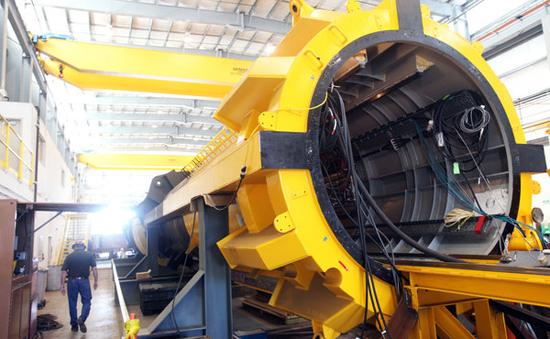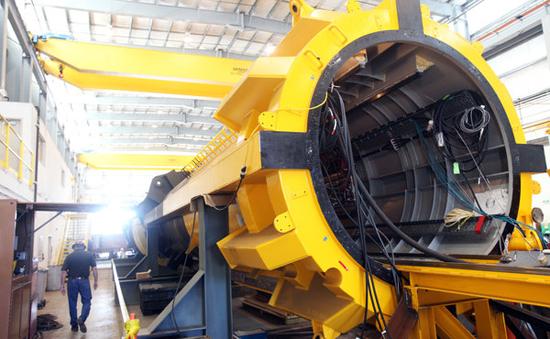
Energy development groups around the world are closely watching what happens here because success or failure with the first United States commercial license could affect the flow of private investment by bigger companies
By Kirk Johnson
The New York Times
Jonathan Redman deburrs a steel installation stand for the cap of the buoy, which is behind him.
But time and technology turned the page, and now the first commercially licensed grid-connected wave-energy device in the nation, designed by a New Jersey company, Ocean Power Technologies, is in its final weeks of testing before a planned launch in October. The federal permit for up to 10 generators came last month, enough, the company says, to power about 1,000 homes. When engineers are satisfied that everything is ready, a barge will carry the 260-ton pioneer to its anchoring spot about two and a half miles offshore near the city of Reedsport, on the central coast.
“All eyes are on the O.P.T. buoy,” said Jason Busch, the executive director of the Oregon Wave Energy Trust, a nonprofit state-financed group that has spent $10 million in the last six years on scientific wave-energy research and grants, including more than $430,000 to Ocean Power Technologies alone. Making lots of electricity on the buoy and getting it to shore to turn on lights would be great, Mr. Busch said. Riding out the storm-tossed seas through winter? Priceless. “It has to survive,” he said.
Adding to the breath-holding nature of the moment, energy experts and state officials said, is that Oregon is also in the final stages of a long-term coastal mapping and planning project that is aiming to produce, by late this year or early next, a blueprint for where wave energy could be encouraged or discouraged based on potential conflicts with fishing, crabbing and other marine uses.
The project’s leader, Paul Klarin, said wave technology is so new, compared to, say, wind energy, that the designs are like a curiosity shop — all over the place in creative thinking about how to get the energy contained in a wave into a wire in a way that is cost-effective and efficient.
Also:
SEIA Sheds Light on Tax Treatment of Solar Financing/Renewable Energy World
Oklahoma’s Wind Power Development Strategy/Renewable Energy World












